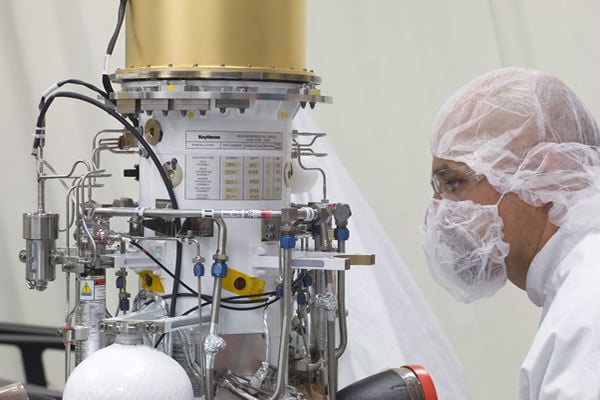A team led by Northrop Grumman partnered with Tucson-based Raytheon Missiles & Defense has been chosen to move on with development of the nation’s next long-range missile interceptor, in competition with a team led by Lockheed Martin.
The U.S. Missile Defense Agency on Tuesday announced it awarded contracts worth up to $1.6 billion through 2022 for the two contractor teams to move forward with the technology development for the Next Generation Interceptor, eliminating a third team led by longtime missile-defense contractor Boeing.
The Next Generation Interceptor, or NGI, is being developed to replace the Ground-based Midcourse Defense system, a system of large interceptors installed in California and Alaska since 2004 to protect the U.S. from intercontinental ballistic missiles from the likes of North Korea and Iran.
Boeing is the prime contractor for the Ground-based Midcourse Defense system. Raytheon makes the system’s kill vehicle, which maneuvers to smash into the target missile in space, and Northrop Grumman provides the rocket booster and ground- and fire-control systems.
Problems with Raytheon’s kill vehicle, including test-flight failures in 2010 and 2013, prompted the Missile Defense Agency to launch an effort to field a redesigned kill vehicle.
But when that effort suffered technical delays and cost overruns, the MDA decided to instead focus on a next-generation interceptor expected to cost about $5 billion and be deployed by 2030.
Vice Adm. Jon Hill, director of the Missile Defense Agency, said in a prepared statement that the NGI represents the first major technical assessment of homeland defenses the defense department has conducted since system operations began in 2004.
“By planning to carry two vendors through technology development, MDA will maximize the benefits of competition to deliver the most effective and reliable homeland defense missile to the warfighter as soon as possible,” Hill said.
According to a Pentagon contract notice, Northrop Grumman’s Chandler-based launch and missile-defense division was awarded a contract worth up to $3.9 billion, including options, to develop NGI technology through March 2026.
Lockheed, which partnered on its NGI bid with rocket-engine maker Aerojet Rocketdyne, was awarded a similar contract worth up to $3.7 billion.
However, initial program funding for both contracts combined is limited to $1.6 billion through fiscal 2022, and about $292 million in fiscal 2021 funding has been initially obligated to each company, the Missile Defense Agency said.
Officials of Northrop Grumman and Raytheon said they will draw on the strengths of each company to develop a design for NGI that meets emerging threats.
“We are bringing together next-generation technologies — digital engineering and game-changing (target) discrimination — for an extremely advanced interceptor,” said Bryan Rosselli, vice president of strategic missile defense at Raytheon Missiles & Defense.
Scott Lehr, Northrop Grumman vice president and general manager for launch and missile defense, noted that the nation faces a “critical timeline” for fielding the next-generation missile defense capability.
“Our team brings together the industry’s top missile defense talent, agile design and manufacturing practices, and state-of-the-art operational factories to support the MDA and our nation’s defense against these evolving threats,” Lehr said.





